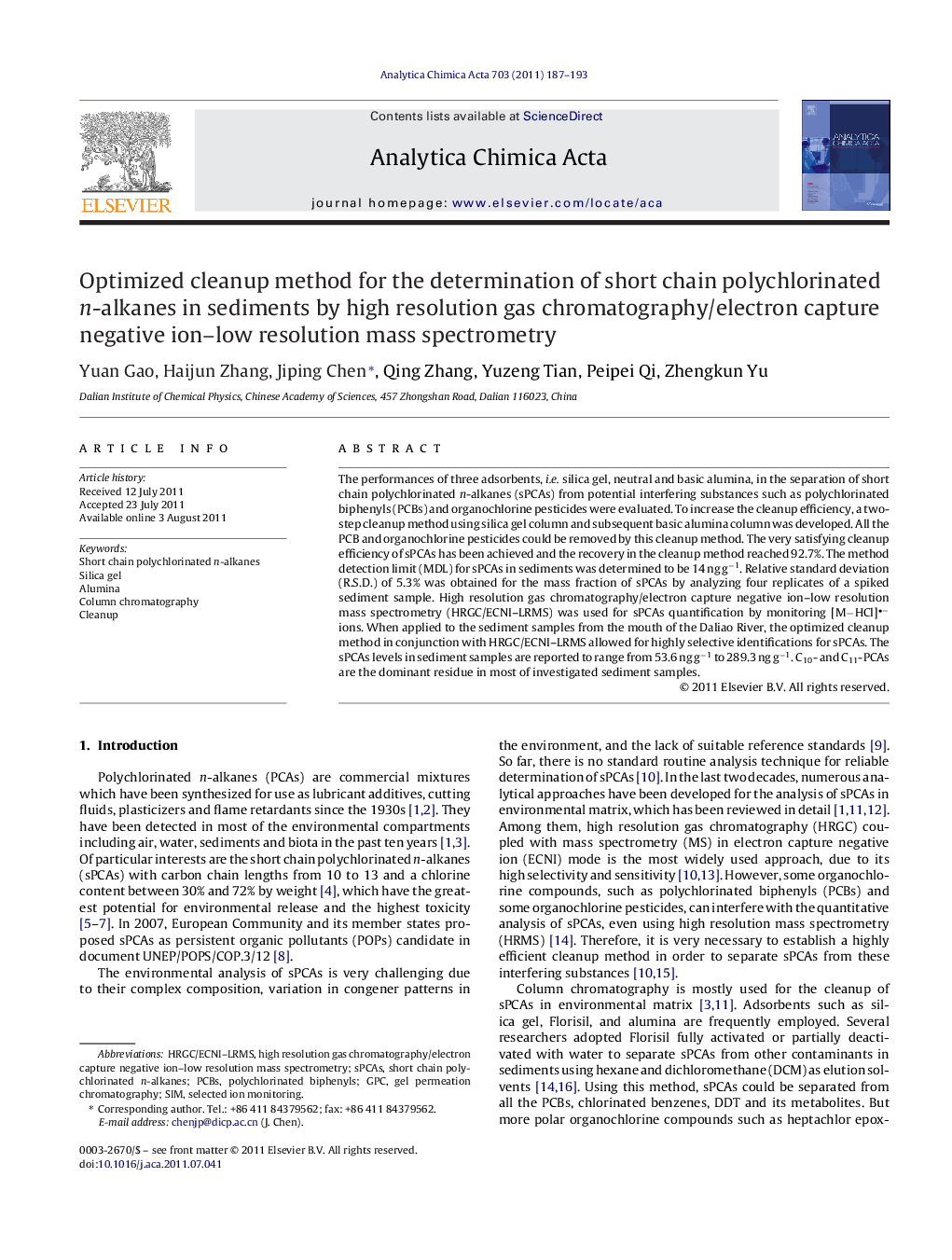| Article ID | Journal | Published Year | Pages | File Type |
|---|---|---|---|---|
| 1166721 | Analytica Chimica Acta | 2011 | 7 Pages |
The performances of three adsorbents, i.e. silica gel, neutral and basic alumina, in the separation of short chain polychlorinated n-alkanes (sPCAs) from potential interfering substances such as polychlorinated biphenyls (PCBs) and organochlorine pesticides were evaluated. To increase the cleanup efficiency, a two-step cleanup method using silica gel column and subsequent basic alumina column was developed. All the PCB and organochlorine pesticides could be removed by this cleanup method. The very satisfying cleanup efficiency of sPCAs has been achieved and the recovery in the cleanup method reached 92.7%. The method detection limit (MDL) for sPCAs in sediments was determined to be 14 ng g−1. Relative standard deviation (R.S.D.) of 5.3% was obtained for the mass fraction of sPCAs by analyzing four replicates of a spiked sediment sample. High resolution gas chromatography/electron capture negative ion–low resolution mass spectrometry (HRGC/ECNI–LRMS) was used for sPCAs quantification by monitoring [M−HCl]− ions. When applied to the sediment samples from the mouth of the Daliao River, the optimized cleanup method in conjunction with HRGC/ECNI–LRMS allowed for highly selective identifications for sPCAs. The sPCAs levels in sediment samples are reported to range from 53.6 ng g−1 to 289.3 ng g−1. C10- and C11-PCAs are the dominant residue in most of investigated sediment samples.
Graphical abstractThe sediment sample could be purified by the optimized cleanup method, and satisfying cleanup efficiency was obtained.Figure optionsDownload full-size imageDownload as PowerPoint slideHighlights► The elution characters of sPCAs and interfering substances were evaluated on three adsorbents. ► An optimized cleanup method was developed for sPCAs with satisfying cleanup efficiency. ► The cleanup method combined with HRGC/ECNI–LRMS was applied for sPCAs analysis. ► The sPCAs levels range from 53.6 ng g−1 to 289.3 ng g−1 in tested sediment samples.
